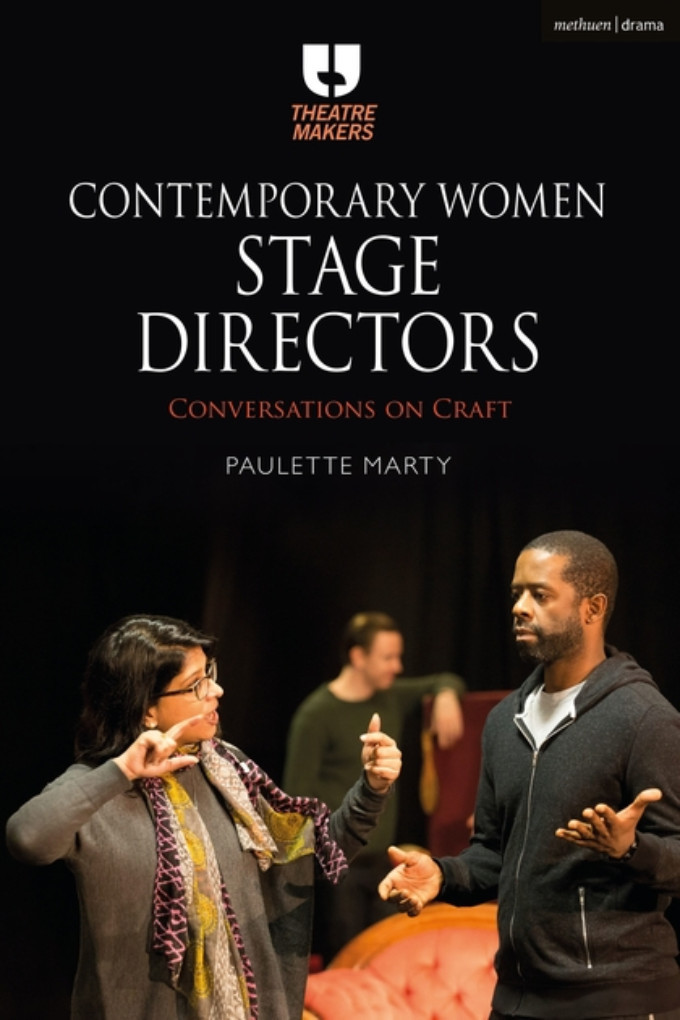Book Review: CONTEMPORARY WOMEN STAGE DIRECTORS, Paulette Marty

In her comprehensive and insightful book Contemporary Women Stage Directors, Paulette Marty attempts to answer a pivotal question: "How does gender influence the work of women directors?"
The book developed out of her initial intention to write an article featuring interviews with 12 mid-career female directors and artistic directors from Britain and America, women who are making some of the most exciting work in English-language theatre today and running some of the most influential organisations in the field.
But you wouldn't know that from a quick scan of the names of featured directors on the back of the book. It's telling that only a few names - Vicky Featherstone and Polly Findlay from this side of the Atlantic and Kimberley Senior in the States - are familiar to this reader. Other than that, no other names of the 27 women directors jump out immediately.
One can't help thinking that if this had been a book about male directors at the same level in their careers, their names might have been more readily recognisable. Which is, of course, the raison d'etre of the book - a bid to amplify these little-heard voices within and beyond the theatre industry.
It's no mean feat that Marty has undertaken here. Gleaned from interviews conducted over three years between 2014 and 2017, it's a thoroughly detailed engagement with all aspects of being a director, regardless of gender. Marty eschews the standard Q&A format in chapters dedicated to each individual director that is usual for this kind of book.
Instead, it's organised thematically within four broad categories covering artistic process, artistic priorities, career, and the impact of gender, race, ethnicity and identity. These are further divided into subheadings that cover topics such as New Plays versus Classics, Influences and Inspirations, Choosing Collaborators, Working with Playwrights, Preparing for Rehearsal, Visual Storytelling, Performer-Audience Relationships, Casting, Confidence and Authority, and Benefits of Diversity. This format means that directors can chip in opinions on a given subject as appropriate.
These sub-headings are broken down further into even more nuanced divisions that give individualised insights from directors of every stripe into: the differences between regional and big-city audiences; the peculiarities of why British and American theatre prioritise writers rather than directors, as is the case in Europe; how people articulate things theatrically; the inside track on the challenges of being a programmer.
It's safe to say that Marty leaves no stone unturned. If you're a budding director, there's plenty covered here that you wanted to know - and a lot more. This book illustrates that theatre, more than any other art form, is the most ephemeral and relies on a unique contract with the audience, made up of individuals gathered together in a room to experience a time-based event that is extremely reliant on the quality of liveness. One of the interviewed directors, Blanche McIntyre, sums it up succinctly when she says that theatre is a "human-sized art form".
The book also makes it clear that there isn't a prescriptive route to becoming a director. The directors are as various as their backgrounds, which traverse everything from Christian Fundamentalism and philosophy to Filipina-Americans, like May Adrales, who was brought up in small-town America.
They are directors who have veered away from the beaten path and defined their own practice and people - like Nadia Fall, whose eclectic tastes mean that she doesn't have a niche, whereas the general theatrical tradition tends to want to know what specific box a director fits in. The European influence also becomes more apparent in the shift from narrative, naturalistic forms to emphasise more visual and auditory aspects of a play.
They are women who have directed everything from commercial theatre like Derren Brown's Svengali and more independent fare like Anna Deveare Smith's Notes from the Field: Doing Time. They have helmed huge Disney-style productions and intimate verbatim, devised and experimental plays, and fretted about the dynamics of directing in a vast space like the National Theatre's Olivier auditorium.
As commendable and useful as the breath of information is, the way it's organised means that there are quite a few repetitions of the same ideas. Inevitably, there are contradictions too, but that is more a function of the diversity of voices within these pages than Marty's compilation skills. Even so, there are sections here, the detail of which would more properly serve the purposes of a memoir or biography.
It's curious that Marty finds no one expressing a fear of artistic failure, despite the instability of the career and even though men are more likely to track through a directing career faster than women because men are granted opportunities based on their potential, whereas women are given directing gigs based on proven performance.
In the end, Marty concludes that the initial question that inspired her quest was a tad naive. The idea that the gender of a director is easy to discern and that works by women have something in common simply because they are made by women makes the initial question null and void, but the research it engendered is extremely valuable to budding directors, students and critics alike.
Contemporary Women Stage Directors: Conversations on Craft by Paulette Marty published by Methuen Books
Reader Reviews
Videos

